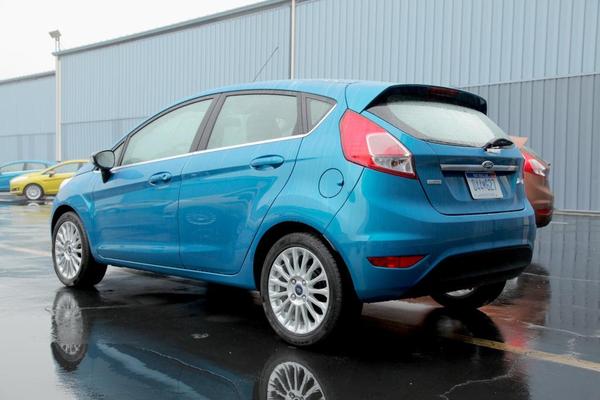Why There's No Powershift Option On The Ford Fiesta Ecoboost
During the launch of the Ford Fiesta 1.0L Ecoboost, multiple outlets ran articles parroting Ford’s PR line about the lack of an automatic transmission. Apparently, Ford declined to offer an automatic or Powershift dual-clutch gearbox on the 3-cylinder Fiesta since a two-pedal option would run counter to the 1.0L’s stated mission of being both fun to drive and good on gas.
Not so, says a supplier source. According to them, there were plans to offer such a combination, but the combo was axed due to “customer expectations” not being met. What does that mean? The performance, ride and NVH characteristics were far below what was considered acceptable, and therefore the decision was made to offer the 3-cylinder with 3-pedals, and no fewer.
More by Derek Kreindler


































Comments
Join the conversation
Eh. 1.0L is tiny man. Sure boosted I have heard it puts out 148pounds of torque. But a bog-standard 2.0L DI engine surpasses that. I guess its about 'gas mileage.' But I question if the gas mileage really amounts to anything significant.. If the engine is that small - you will always be in boost - and thus you will not get great gas mileage. I know - I drive an Audi. But I knew going in I wasn't going to get Prius mileage. Turbos work best for performance. They enable regular size engines to put out AMAZING numbers. They are crappy as gas saving devices though.
"vastly improves fuel consumption because there is no need to rev the engine to get performance. High revs are whats bad for consumption. Apply the same thinking of a big, low revving V8 on a MUCH smaller scale ;-)" Vastly? You know the model T got 25 MPG. There is nothing vast about the mileage increase with these turbo engines. There is this science called physics which plots against ICE engines. When driven with alacrity these very small engines just don't deliver great MPG in the real world . CAFE standards just mean we will all be driving hybrids/electrics in the future.. Maybe I should invest in a Battery company..
I wonder how hard a Rocket III engine swap is.
The 1.0 EcoBoost is particularly useful in Europe where CO2 emissions are the basis for EU legislation as well as the various tax environments in the EU countries. It's 139 g/km of CO2 for the outgoing 1.6 versus 99 g/km for the equally powerful EcoBoost. Imagine how that works out in a country that charges road and/or sales tax on CO2 emissions. I guess the 1.6 works fine in the US where it easily meets CAFE and such. Apparently Ford thinks the market for compacts with automatics is so small it is the economical choice to offer the American setup (1.6/PowerShift) instead of engineering the 1.0 in such a way it takes a PowerShift.